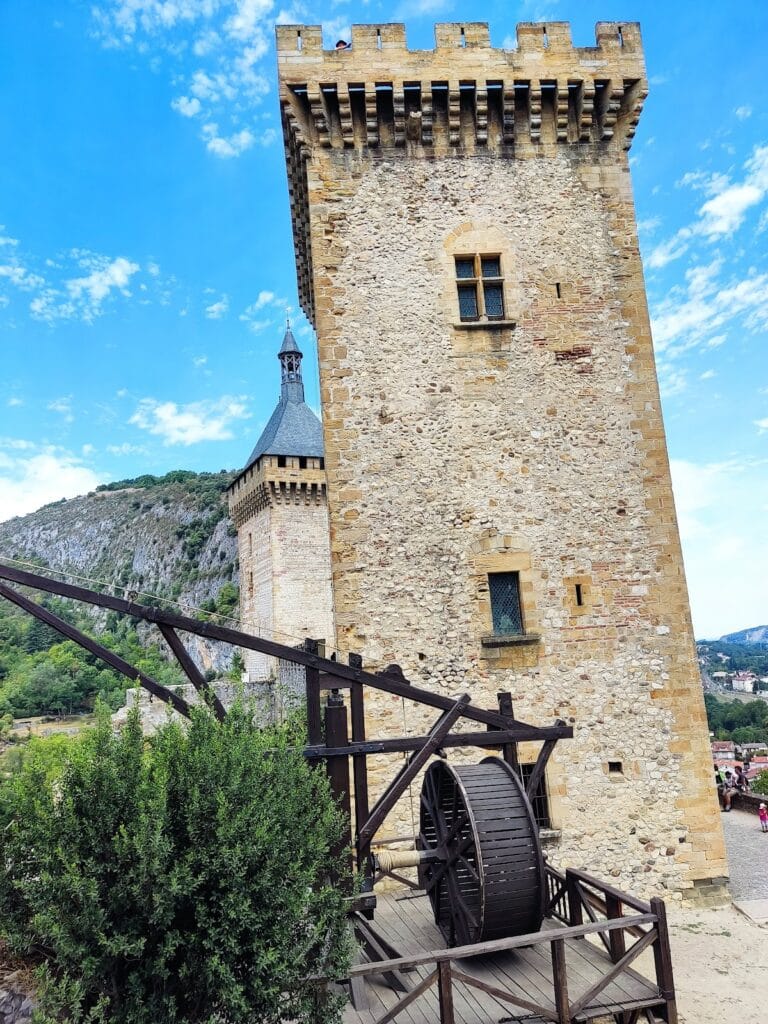Castle of Foix: A Medieval Fortress and Museum in France
Visitor Information
Google Rating: 4.4
Popularity: Medium
Google Maps: View on Google Maps
Official Website: www.sites-touristiques-ariege.fr
Country: France
Civilization: Medieval European
Remains: Military
History
The Castle of Foix is located in the town of Foix, in modern-day France, and was originally established by medieval society on the foundations of a fortification dating back to the 7th century. The earliest recorded mention of the castle dates to 987, and it quickly became the seat of regional power.
In the early 11th century, the castle became central to the County of Foix when Roger I, Count of Carcassonne, entrusted it in 1002 to his youngest son Bernard. Bernard was later recognized around 1012 as the first Count of Foix, inaugurating the noble lineage that would govern the area for centuries. By 1034, the castle had become the administrative and military capital of the county.
During the 13th century, the fortress played a significant role in resisting external forces. Notably, it stood as a stronghold during the Albigensian Crusade, a military campaign aimed at eradicating the Cathar religious movement in southern France. Although the castle itself never served as a refuge for Cathars, it was known to be a center supporting Occitan opposition to the crusaders. The castle endured several sieges during this period, including notable attacks in 1211 and 1212 led by Simon de Montfort, a chief commander of the crusading army, but it remained unconquered through those assaults.
Despite its resilience, the castle eventually fell in 1486. Its capture came through betrayal within the ruling family rather than direct military assault, marking a turning point in its history. Following this event, the Counts of Foix gradually reduced their presence at the fortress throughout the 14th century, choosing to reside more often in other locations.
From the 15th century onward, the castle served a different purpose. It became the seat of the Governor of Foix, overseeing regional defense, particularly during the Wars of Religion that embroiled France in the late 16th century. Unlike many other castles ordered demolished during the centralization efforts under Cardinal Richelieu in the 17th century, the Castle of Foix was spared, maintaining its military importance.
For around four hundred years, stretching from the 17th century until 1862, the castle functioned as a prison for political and civil detainees. It retained a military presence until the French Revolution altered the political landscape of France. In the 19th century, restoration efforts led by Paul Boeswillwald sought to return the castle to its medieval form, preventing its decline.
Since 1930, the Castle of Foix has housed the Ariège departmental museum. The museum presents collections ranging from prehistoric times to the Gallo-Roman period and the Middle Ages, with particular attention given to the castle’s own history and the life surrounding the Counts of Foix during their rule.
Remains
Perched on a rocky promontory overlooking the town of Foix, the castle’s strategic position commands the entrance to the upper Ariège valley. Its construction follows the natural contours of the cliff, with thick stone walls providing formidable defense. These structures show a blend of materials, primarily local limestone, reinforced by finely cut sandstone used in later additions.
Two principal square towers known as donjons mark the castle’s earliest medieval phase. The Arget Tower, built by Bernard Roger, and the Pointue Tower, attributed to Roger II, date back to the 10th or 11th century. These towers were connected by a substantial hall likely serving as the main lordly residence. Defensive walls extending along the cliff edges created a secure enclosure supplemented by features such as machicolations—openings used to drop objects on attackers—crenellations, and arrow slits.
Around the early 15th century, a third tower with a rounded form was added. This Round Tower was designed more for habitation than defense, indicated by its spacious interior and comfort elements. Rising 34 meters and comprising five floors with hexagonal plans, it included a ground-floor chapel, expansive windows, fireplaces, latrines, and vaulted ceilings. The tower’s thick walls, reaching up to four meters, were constructed using finely dressed sandstone from a nearby quarry rather than the limestone common to earlier structures, reflecting advances in building techniques and living standards.
The castle’s fortifications were further enhanced over time. In the late 13th century, the Arget Tower was clad with slate and surrounded by an additional protective wall, called a chemise, during times of conflict. Defensive improvements included the construction of barbicans (walled outworks before main gates) and châtelets (small fortified gatehouses) featuring watch turrets to guard the main entrances. The walls incorporate limestone and brick in various sections, with some portions doubled or reinforced by the late 13th or early 14th centuries to withstand increasing military threats.
Inside the castle, multiple functional spaces remain evident. A chapel served the spiritual needs of the inhabitants. Several cisterns collected rainwater for use during sieges. Access was controlled through two main gates, each safeguarded by the surrounding defenses. Later in the medieval period, windows were enlarged to improve interior light, and floors were tiled with decorative motifs, suggesting a degree of domestic refinement.
In the 18th and 19th centuries, the castle’s conversion to a prison brought significant alterations. Cells received sturdy doors with metal locks and barred windows, and new administrative buildings were constructed on the eastern terraces to support prison operations. Evidence of prisoners’ presence survives in the form of graffiti etched into the walls of the Round Tower’s cells, offering a tangible connection to its later use.
The castle’s continuous occupation through diverse roles helped preserve its structures, avoiding the common fate of ruin or dismantling for building materials by locals. Restoration work in the 19th century further stabilized the monument and restored aspects of its medieval character. Today, the castle stands not only as a fortified sentinel over Foix but also as a repository of regional history, hosting museum collections that span from prehistoric times through the medieval era, including exhibits about its own long and varied past.







